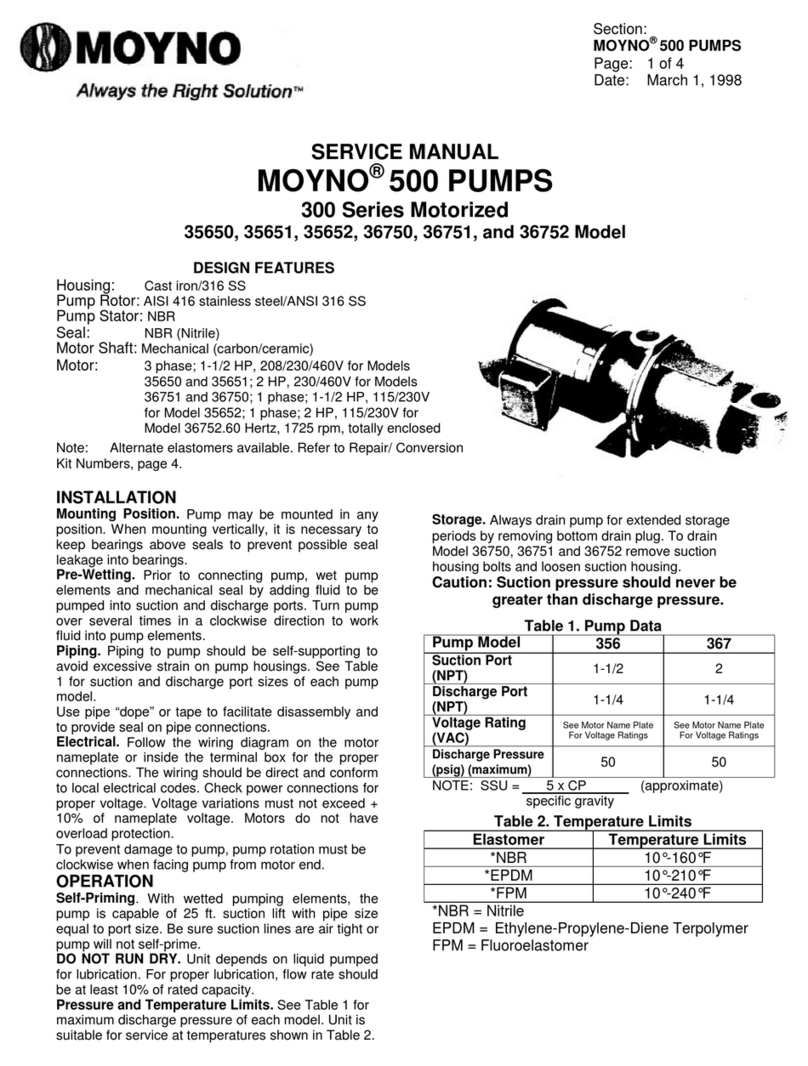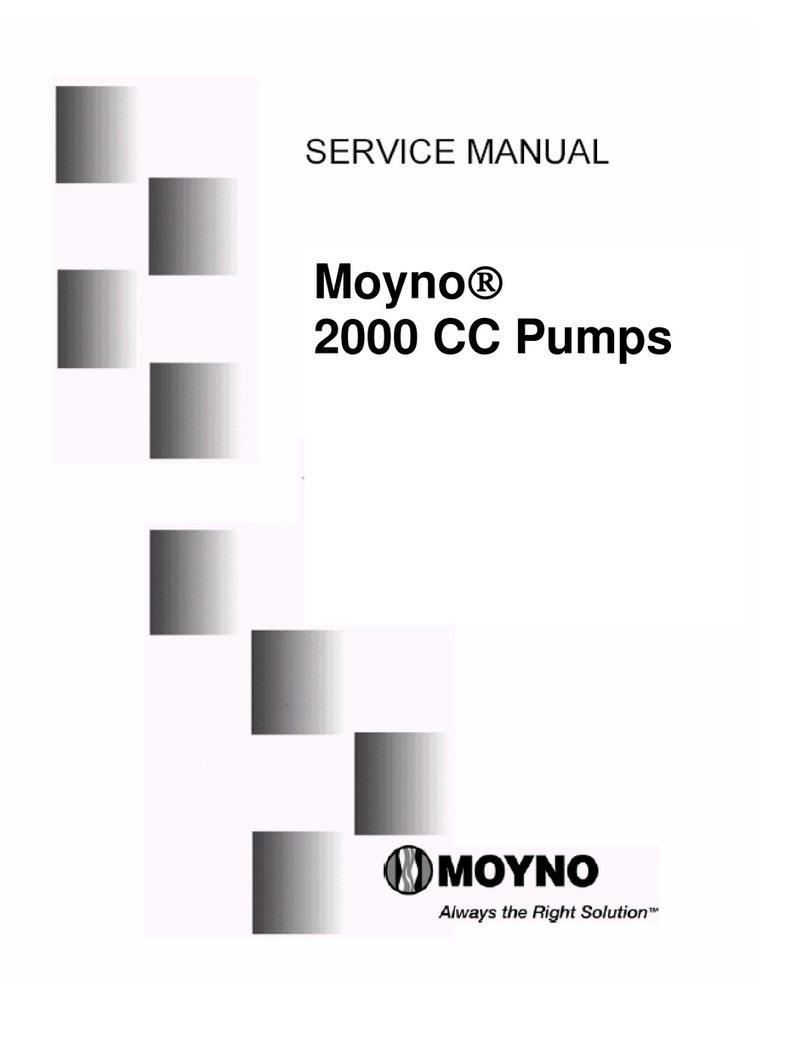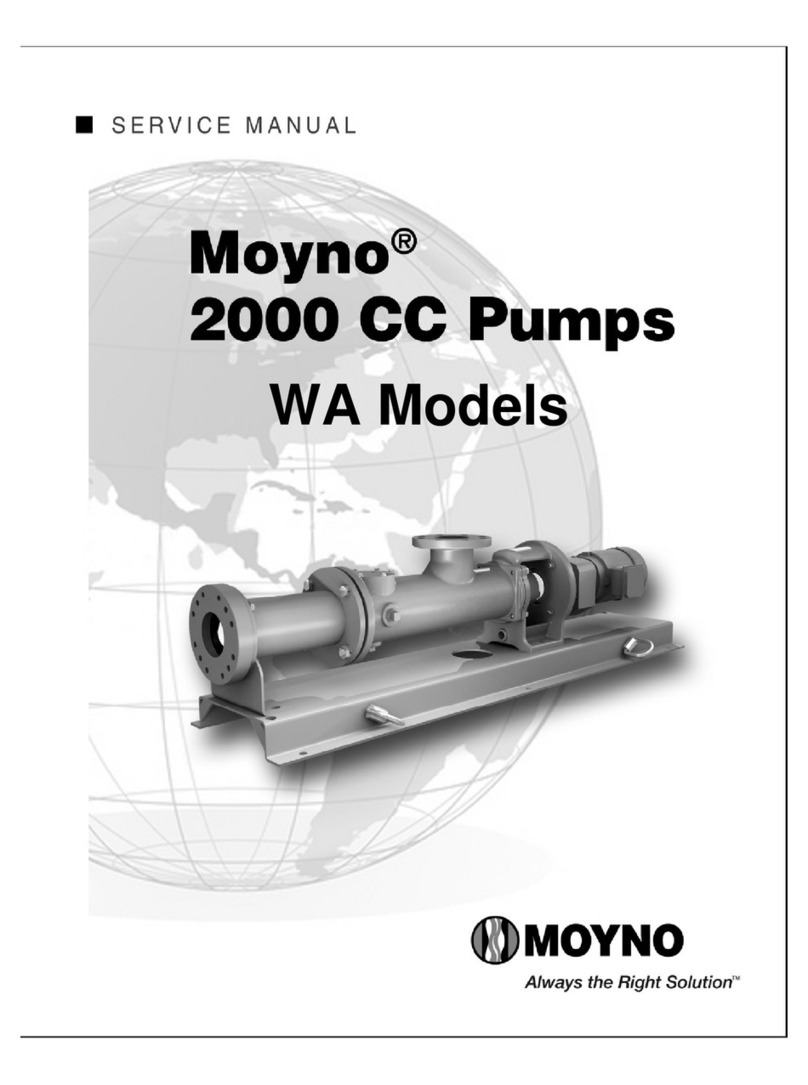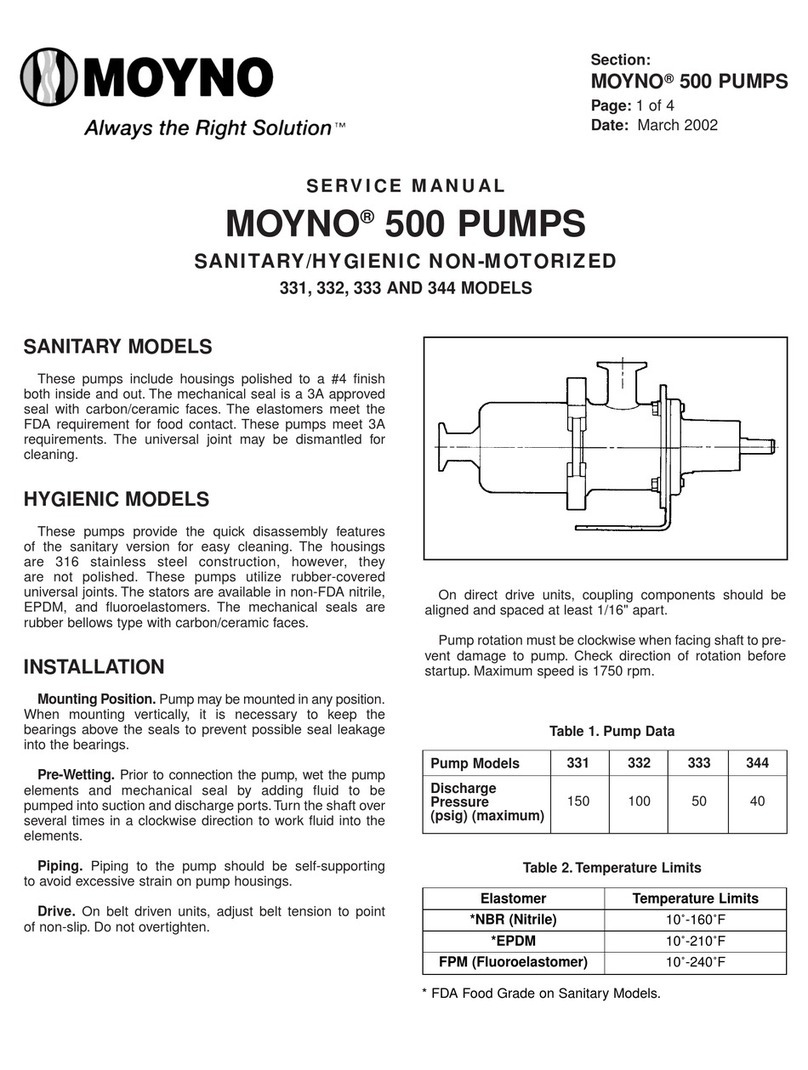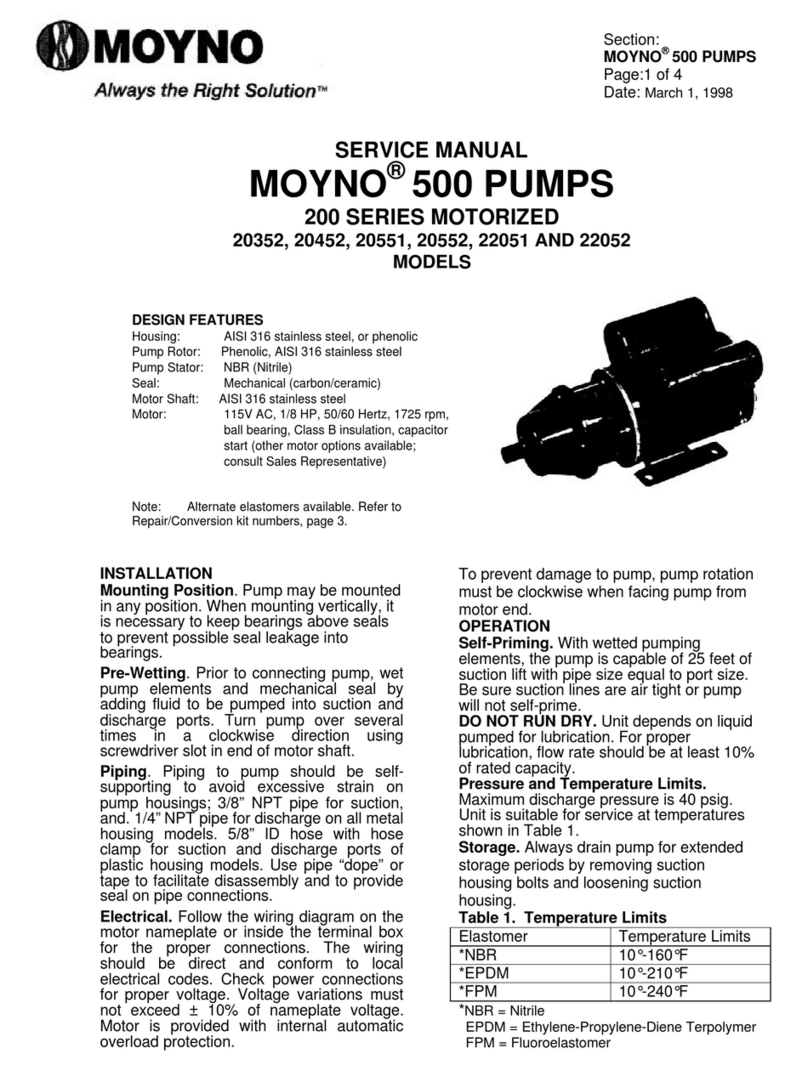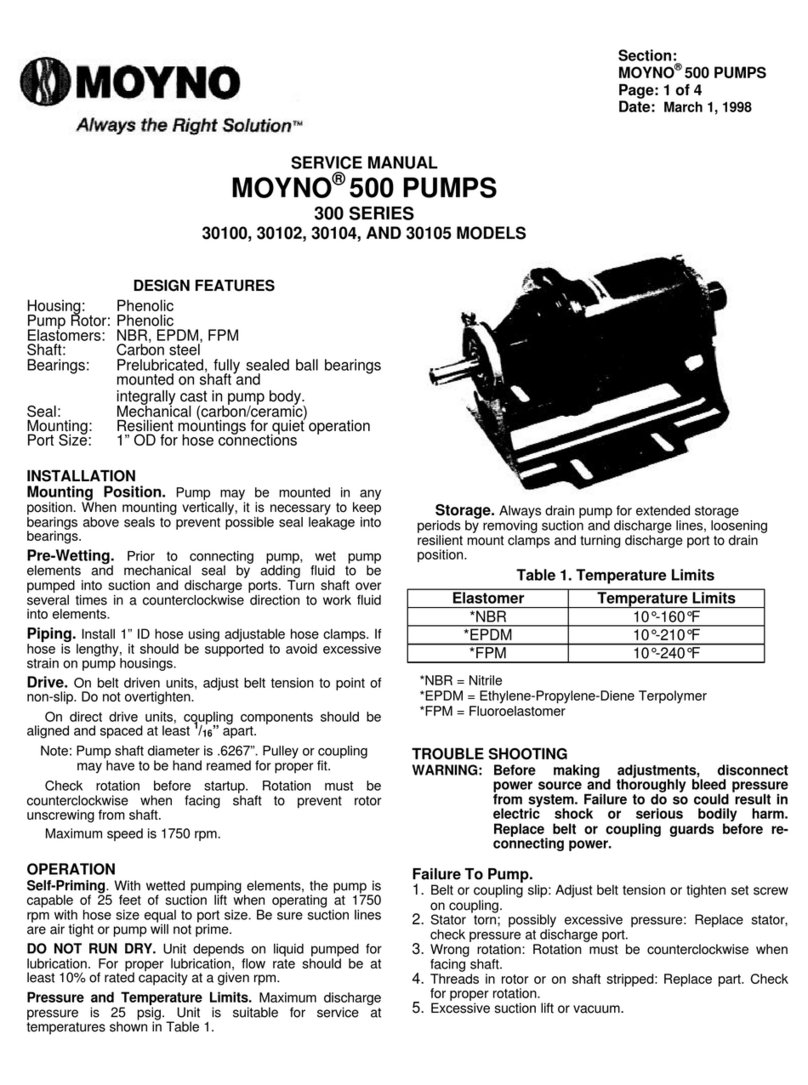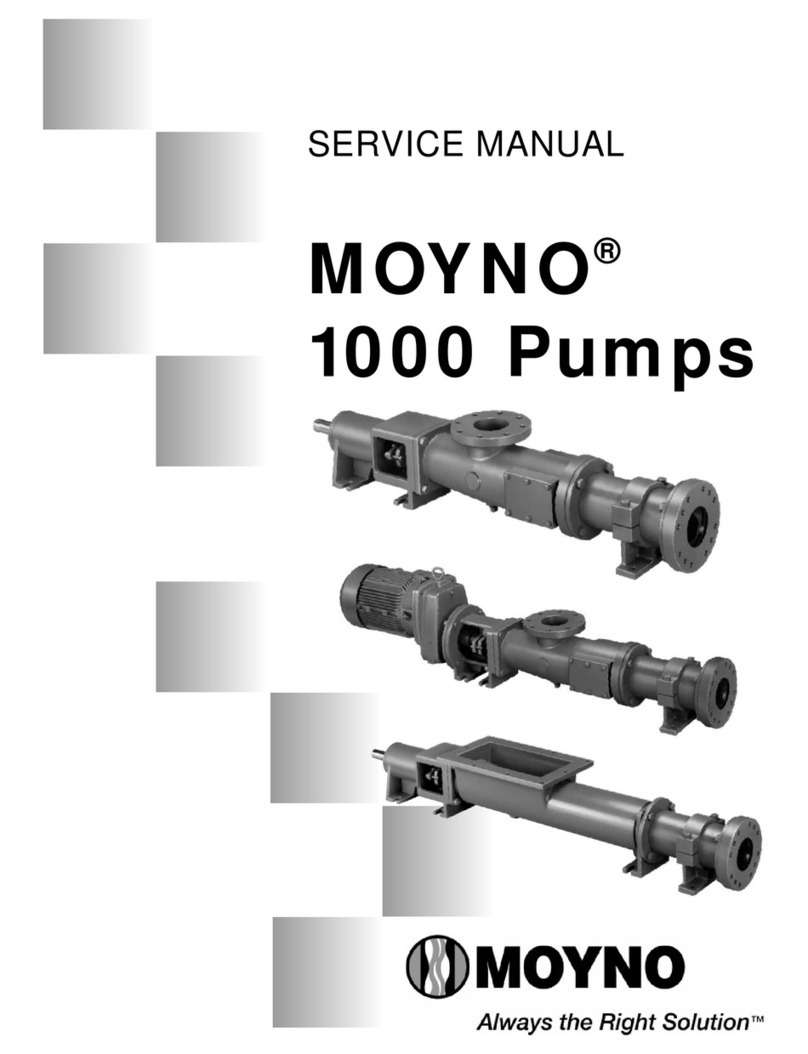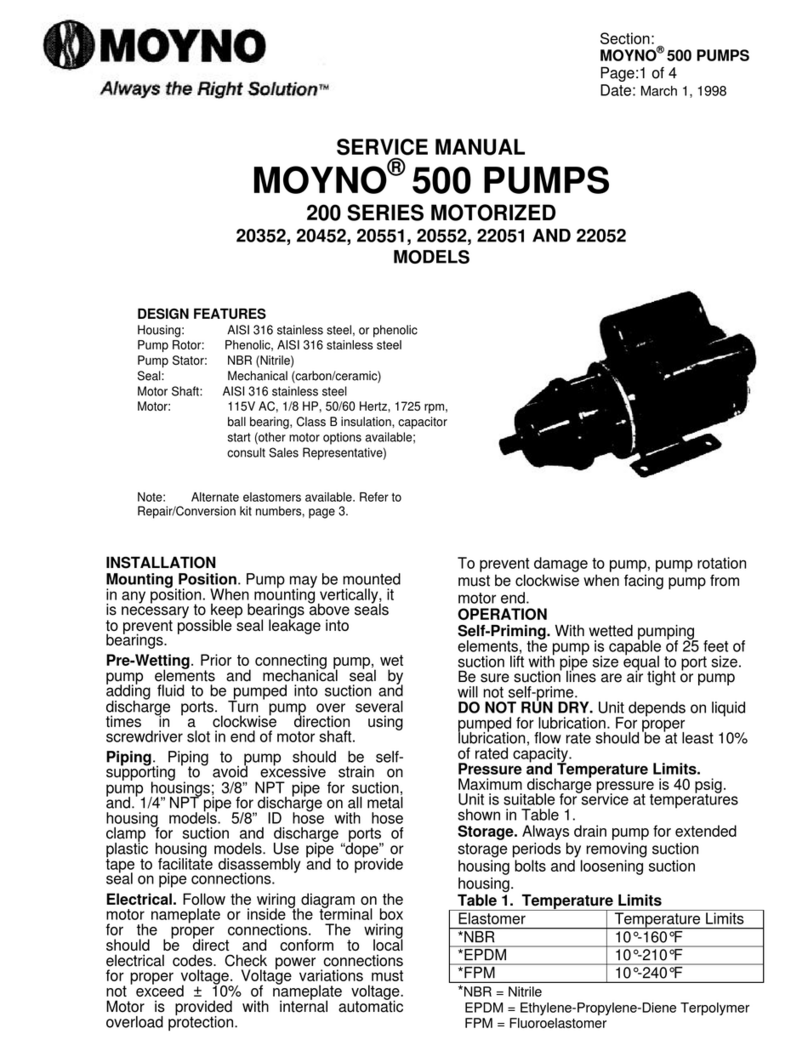
When packing is new, frequent minor adjustments during the
first few hours of operation are recommended in order to
compress and seat the packing.
1. Upon initial start-up of the pump, adjust the gland nuts for
a leakage rate of 50-100 drops per minute until the
packing has seated and adjusted to the operating
temperature (approximately 10-15 minutes).
2. If leakage is excessive after 15 minutes of operation,
tighten the gland nuts ¼ of a turn.
3. Tighten the gland nuts ¼ of a turn after an additional 15
minutes if necessary and repeat this procedure until a
desired leakage of 1-2 drops per minute is obtained.
Adding grease may also reduce leakage by providing a
barrier at the lantern ring.
CAUTION: Do not tighten until zero leakage is obtained.
Overtightening the packing gland may result in accelerated
wear on the packing and damage to the shaft. In those
situations where no packing leakage can be tolerated, consult
your Moyno Authorized Representative.
Area To Lubricate Approved Lubricant or
Equivalent
Packing ACG-2
(Dubois Chemical, Inc.)
4-4. PACKING REPLACEMENT
Note: In this section, the first reference to each pump part will
be followed by a number or a letter in parentheses ( ). These
numbers and letters are used to identify the pump parts and
hardware items in the Exploded Views in Section 13-1.
When tightening the gland nuts can no longer regulate leakage,
remove and replace the packing. The entire pump does not
need to be disassembled to replace the packing. Briefly, replace
as follows:
1. Remove packing gland nuts and slide gland halves (152)
back along drive shaft (400).
2. Use a packing puller tool (see Figure 4-2) to remove the
packing (150).
Figure 4-2. Packing Removal Tool
3. Inspect surface of drive shaft for excessive wear or grooves
due to packing rub. If shaft is worn, or is badly scored or
grooved, it should be replaced.
4. If drive shaft is not worn, install a lantern ring and four
packing rings, lubricating them before installation with a
good grade of packing grease. Be sure to stagger the
packing ring joints at 90-degree increments.
Note: The stuffing box is supplied with four rings installed, a fifth
ring may be added after initial compression.
CAUTION: ALWAYS USE A PROPER PACKING TAMPER
TOOL TO INSTALL PACKING. Do not use a pointed or sharp
tool, as damage to the packing material or drive shaft could
result. To assure proper shaft lubrication, never use a one-piece
spiral wrap packing.
5. Replace packing gland halves and secure with packing
gland and nuts (156).
Page 3
6. Adjust packing per Section 4-3.
5-1. DISASSEMBLY
Note: In this section and in following sections on CLEANING,
INSPECTION, and ASSEMBLY, the first reference to each
pump part will be followed by a number or letter in
parentheses ( ). These numbers and letters are those used to
identify the pump parts and hardware items in the Exploded
Views in Section 13-1.
5-2. DISCONNECT PUMP
1. Disconnect the power source.
2. Close suction and discharge valves to isolate the pump
from the line.
5-3. STATOR REMOVAL
1. Remove section of discharge pipe attached to discharge
flange (200).
2. Remove discharge flange by unbolting from stator clamp
ring (210) and remove stator gasket (510). Use a
screwdriver tip to remove stator retaining ring (480), stator
clamp ring (210), and pump support (220) from stator
(500).
3. Unbolt stator clamp ring (210) from suction housing and
remove stator from rotor (turning stator clockwise while
removing will ease disassembly). Remove the stator
retaining ring. Remove stator clamp ring from stator. See
Figure 5-1. for the typical retaining ring removal procedure.
Figure 5-1. Typical Retaining Ring Removal
5-4. SUCTION HOUSING REMOVAL
1. Remove four bolts and lock washers (230) holding the
suction housing (100) to the drive adapter (10).
2. Pull the suction housing toward the rotor and away from
the adapter housing. Place a block of wood under the
suction housing to prevent it from dropping as you pull it
away from the adapter housing.
5-5. ROTOR/CON ROD/DRIVE SHAFT ASSEMBLY
REMOVAL
1. Slide the slinger ring (60) along the drive shaft (400),
towards the gear reducer, exposing the drive pin (70).
2. With a punch and hammer, tap the drive pin from the
drive shaft.
3. Carefully pull the rotor/con rod/drive shaft assembly from
the gear reducer. Place the assembly aside for now. On
larger sizes where it may be awkward to remove the
whole rotating unit as one piece, the rotor can be remove
first. Refer to section 5-8 for joint disassembly
instructions.
























